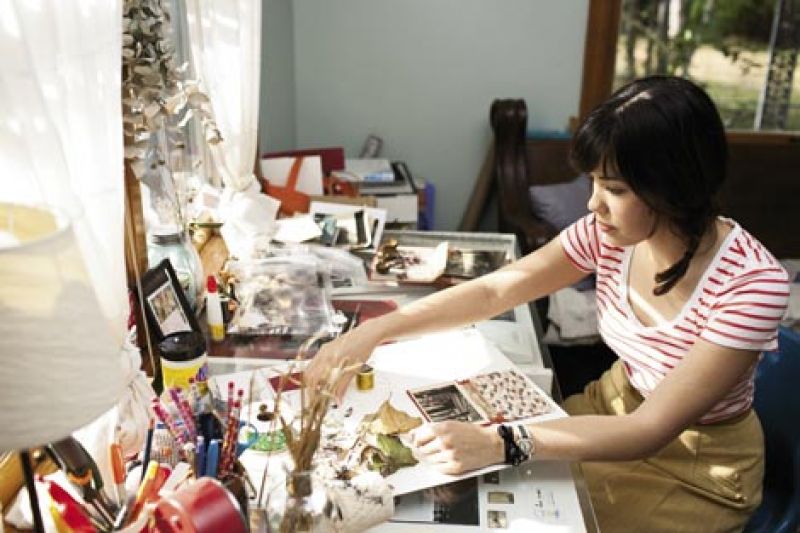
Nina Garner is a collector. On walks, she picks up leaves, seeds, flowers, or feathers that catch her eye and stores them in her pocket, hoping they remain intact until she reaches home. On her desk, Ziploc bags of seeds, kite cord, and lace are arranged in neat piles alongside glass jars filled with ribbons, snakes’ skins, and butterfly wings found during treks through Caw Caw Interpretive Center, in the fields where she works at Thackeray Farms, or on other adventures.
Garner, a 2009 College of Charleston studio art and photography grad, gives these discarded items new life in her miniature mixed-media pieces comprised of photographs she’s taken embellished with fabric, stitching, cut paper, and organic materials. “Nina combines these elements to create compositions that glorify moments in time, the beauty in nature, and people,” says exhibit co-curator Rebecca Silberman. “Her work nods heavily towards Romanticism by bonding the everyday and the exotic.”
Using a medium-format camera, Garner taps into both by exploring the Lowcountry, taking unconventional portraits of friends and family. Searching thrift stores for antique books, she uses the hardback covers she finds as canvases. Sometimes she incorporates remnants of the pages—such as a child’s scribbled signature or a piece of text—and stains the images with coffee to create an aged look. The results are mixed-media assemblages that open to reveal a hidden, fantastical world.
In Snake Skin Clouds, Garner’s boyfriend is almost indistinguishable from a large oak tree, one arm appearing out of the wrinkles in the wood. Kite cord, fabric, paper, butterfly wings, turkey tail, and snake skin envelope the silver gelatin print, inviting the viewer to step inside, follow the beckoning arm, and disappear into the woods.
“In college, I took an independent study course in photography and drew inspiration from the book Forget Me Not: Photography and Remembrance by Geoffrey Batchen,” explains Garner. “I try to create work that encompasses some of the same ideas as those decorated photographs from the 1800s—turning a flat, one-dimensional image into a three-dimensional piece that, in a way, preserves that individual forever, so they’re never forgotten,” she says. But rather than studio portraiture, Garner prefers portraits taken outdoors, “where place is just as present as the person,” she says. “I’m still trying to preserve that person, but now my works capture more of a moment in time, or even a memory.”